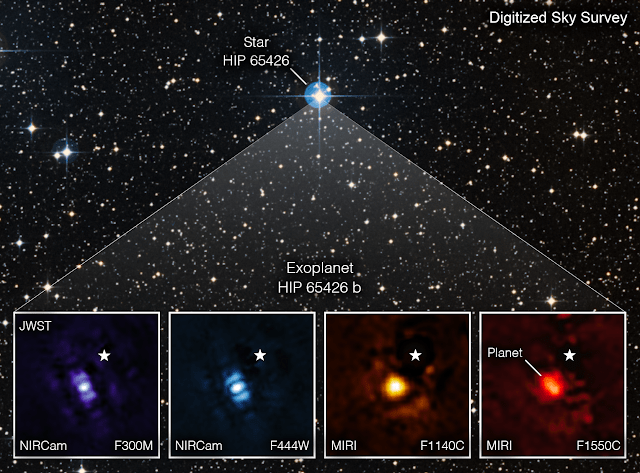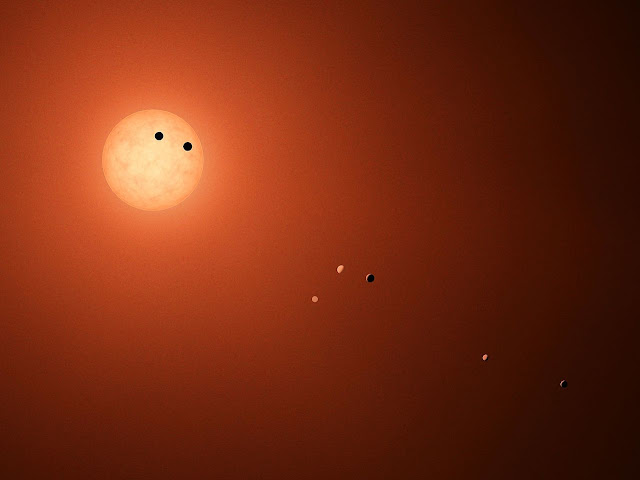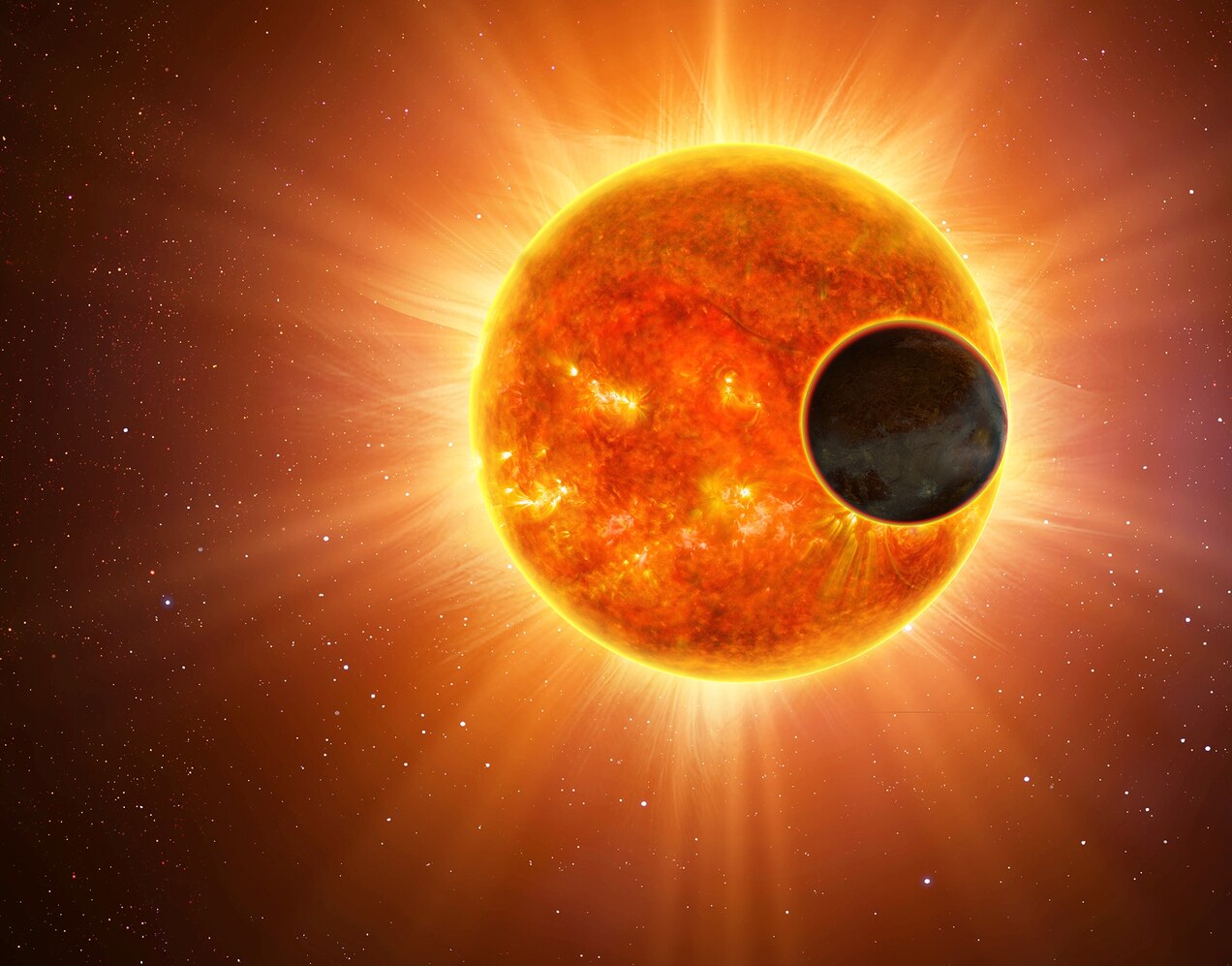
The James Webb Space Telescope has captured the first direct image of a distant exoplanet, a world beyond our Solar System.

Credit: NASA/JWST
Webb has returned several pictures of the exoplanet HIP 65426 b, a gas giant six to twelve times the mass of Jupiter located roughly 385 light years from Earth, using a range of instruments.
The findings are part of an ongoing investigation and have not yet been peer-reviewed or published in a scientific journal, but Nasa announced them in a blog post.
“This is a pivotal moment, not only for Webb but also for astronomy in general,” said Sasha Hinkley, associate professor of physics and astronomy at the University of Exeter. She is the principal scientist in an international team studying exoplanets.

The James Webb Space Telescope captured this image of the exoplanet HIP 65426 b. (Nasa)
HIP 65426 b was discovered in 2017 by the European Southern Observatory’s Very Large Telescope in Chile, which observed the exoplanet in short wavelengths of infrared light because longer wavelengths are blocked by Earth’s atmosphere for ground-based observatories. Because Webb is in space, he has access to more of the infrared spectrum and can see more details in distant planets.
Webb’s images are not the first direct images of exoplanets; the Hubble Space Telescope has captured images of other alien worlds, but it is difficult to do so because the strong brightness of a planet’s neighbouring star can obscure the light from that exoplanet. HIP 65426 b, for example, is 10,000 times fainter than its star.
HIP 65426 b, on the other hand, orbits its star at a distance 100 times greater than the Earth does the Sun, which helped astronomers identify the planet in Webb’s photographs. Webb’s sensors also have coronagraphs, which black out the disc of the distant star to reduce glare and make detecting and focussing on an exoplanet easier.

“I think what’s most exciting is that we’ve only just begun,” University of California, Santa Cruz post doctoral researcher Aarynn Carter, who analyzed the new Webb images of HIP 65426 b, said in a statement. “There are many more images of exoplanets to come that will shape our overall understanding of their physics, chemistry, and formation. We may even discover previously unknown planets, too.”

“It was really impressive how well the Webb coronagraphs worked to suppress the light of the host star,” Dr Hinkley said. The photographs, captured with different filters and Webb’s Near-infrared camera (Nircam) and Mid-infrared instrument (Miri), are just the beginning of what scientists anticipate will be a long series of exoplanet observations and discoveries made possible by the new space observatory.
The photographs follow a fresh analysis of one of Webb’s earliest sightings, a spectrum of light from the exoplanet Wasp 39b, which confirmed the presence of carbon dioxide in an extraterrestrial world’s atmosphere for the first time.





